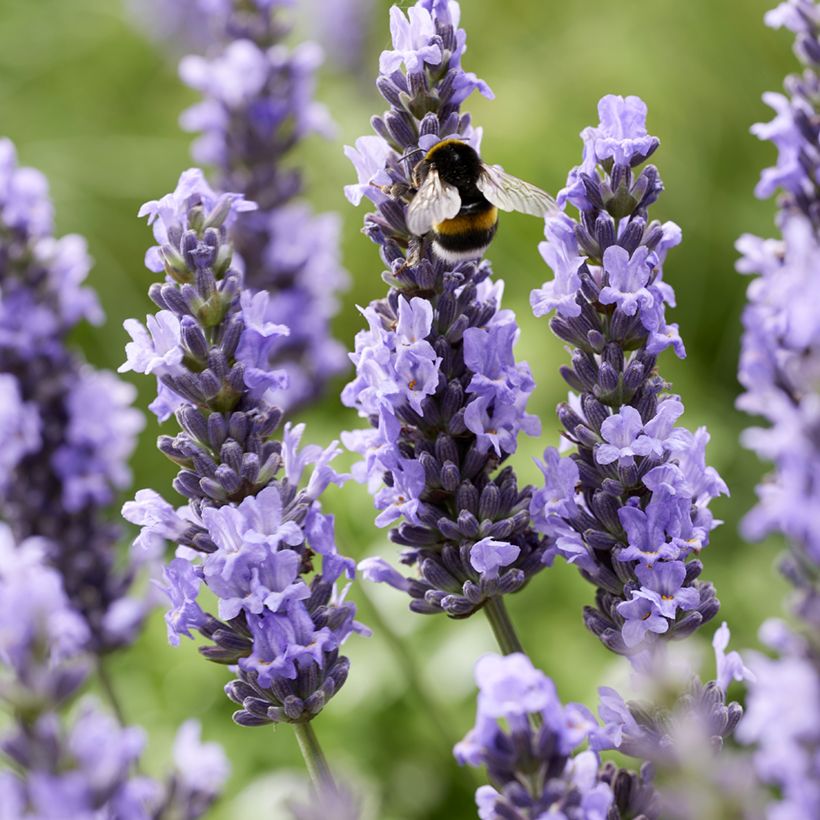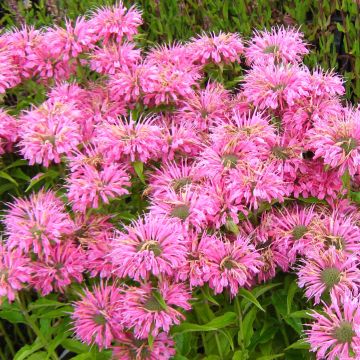Shipping country and language
Your country of residence may be:
Your country of residence is:
For a better user experience on our website, you can select:
Your shipping country:
Andorra
Austria
Belgium
Bulgaria
Canada
Chile
Croatia
Cyprus
Czechia
Denmark
Estonia
Finland
France
Germany
Greece
Hungary
Iceland
Ireland
Italy
Latvia
Lithuania
Luxembourg
Malta
Monaco
Netherlands
Poland
Portugal
Romania
Slovakia
Slovenia
Spain
Sweden
Switzerland
United Kingdom
We only deliver seed and bulb products to your country. If you add other products to your basket, they cannot be shipped.
Language:
French
German
Spanish
English
My Account
Hello
My wish lists
Plantfit
Log in / Register
Existing customer?
New customer?
Create an account to track your orders, access our customer service and, if you wish, make the most of our upcoming offers.


Lavandula intermedia Sensational


Lavandula intermedia Sensational


Lavandula intermedia Sensational
Lavandula intermedia Sensational
Lavandula x intermedia Sensational! ('Tesseract'PBR) EU 20213140
Lavandin, Dutch Lavender, Lavender Hybrid
The young plants didn't take root. Out of the 3, one wasn't in great shape upon arrival. There were high temperatures shortly after planting, and despite daily watering, they got scorched. But I was refunded, and considering the number of orders I've placed, I see this as an isolated issue.
Anne, 10/12/2024
Order in the next for dispatch today!
Dispatch by letter from 3,90 €.
Delivery charge from 5,90 € Oversize package delivery charge from 6,90 €.
More information
This item is not available in your country.
Shipping country:
Andorra
Austria
Belgium
Bulgaria
Canada
Chile
Croatia
Cyprus
Czechia
Denmark
Estonia
Finland
France
Germany
Greece
Hungary
Iceland
Ireland
Italy
Latvia
Lithuania
Luxembourg
Malta
Monaco
Netherlands
Poland
Portugal
Romania
Slovakia
Slovenia
Spain
Sweden
Switzerland
United Kingdom
Schedule delivery date,
and select date in basket
This plant carries a 12 months recovery warranty
More information
We guarantee the quality of our plants for a full growing cycle, and will replace at our expense any plant that fails to recover under normal climatic and planting conditions.
From 5,90 € for pickup delivery and 6,90 € for home delivery
Express home delivery from 8,90 €.
From 5,90 € for pickup delivery and 6,90 € for home delivery
Express home delivery from 8,90 €.
Would this plant suit my garden?
Set up your Plantfit profile →
Description
Lavandula x intermedia Sensational !, known by its cultivar name 'Tesseract', is an exceptional variety of hybrid lavender. It has very large flowers with a seductive intense purple fragrance, on a tall plant with broad and thick, silver-grey leaves. It has a long flowering period on a well-branched, upright and compact clump, with healthy foliage that is not very susceptible to diseases. It should be planted in poor soil and full sun to enjoy its fragrance and beautiful silver foliage fully.
The Lavandula genus belongs to the lamiaceae family, like sage, rosemary, and thyme. Lavenders are obtained by cross-breeding L. angustifolia and L. latifolia. These two species are found in the wild in the same mountainous environment and naturally cross-breed. They have given rise to numerous cultivars, all easy to grow in the garden, tolerant to limestone and relatively hardy in well-drained soil. Lavandin has broader, less silver and less aromatic foliage than "true" lavender.
The Sensational! hybrid forms a large round cushion, with vigorous growth, reaching 60 to 90 cm in flower, 60 cm for the foliage, and a diameter of 60 to 90 cm. Its 6 cm long leaves are wider than those of true lavender (Lavandula angustifolia), remain evergreen in winter and stay grey even in humid climates. They become even more silver in dry soil and hot climates. However, in cooler climates, while the plant gains foliage and robustness, it loses intensity of colour and fragrance. Flowering occurs throughout the summer, from June-July to August-September, depending on the climate. Long, slender stems emerge from the massive foliage ball, bearing very large 11 cm spikes of intense purple, nectar-rich flowers.
Lavandins are jewels of the Mediterranean scrubland and thrive in arid environments, on rocky and well-drained soils, characteristic of these dry regions in summer. To grow these plants in areas with cooler and more humid climates, it is crucial to choose a sunny location, with poor, stony soil, including limestone, that does not retain water during winter. Rockeries prove to be the ideal habitat, where they coexist harmoniously with rockroses, rosemary, sunroses, mugworts, and thymes. You can integrate perennial plants adapted to dry soils, with vibrant or more subtle blooms, such as toadflaxes, sages, gaillardias, or the beautiful Convolvulus althaeoides, a charming climber from Provence. It is also possible to design large flower beds on well-drained slopes, combining various lavender species that offer a varied visual spectacle through their sizes, flowering periods, and foliage types.
Tips: Put dried flowers in a handkerchief and close it by tying its 4 corners to scent the laundry and repel moths. Create scented sugar by putting lavender leaves in brown sugar.
Lavandula intermedia Sensational in pictures




Flowering
Foliage
Plant habit
Botanical data
Lavandula
x intermedia
Sensational! ('Tesseract'PBR) EU 20213140
Lamiaceae
Lavandin, Dutch Lavender, Lavender Hybrid
Cultivar or hybrid
Planting and care
In nature, lavenders and lavandins always live in full sun in poor, rocky environments, dry in summer and winter and well-drained. They hate summer watering, which can kill them as they are very sensitive to fungal diseases induced by a combination of heat and humidity. In winter, they need perfect drainage, and in summer, they need to be kept dry.
The Sensational! lavandin will age better in poor soil, as its growth will be slower, and it will be less likely to thin out from the base. To limit this phenomenon, prune it, from a young age, after flowering or in autumn, just above the first buds that can be seen on the wood. Lavenders and lavandins never regrow on old wood. The clump will thus branch out more and more, remaining compact, eventually forming beautiful round and dense cushions. At planting, give them what they like: gravel, rocks, coarse sand, but no potting compost or fertiliser.
Planting period
Intended location
Care
- , onOrder confirmed
Reply from on Promesse de fleurs
Summer flowering perennials
Haven't found what you were looking for?
Hardiness is the lowest winter temperature a plant can endure without suffering serious damage or even dying. However, hardiness is affected by location (a sheltered area, such as a patio), protection (winter cover) and soil type (hardiness is improved by well-drained soil).

Photo Sharing Terms & Conditions
In order to encourage gardeners to interact and share their experiences, Promesse de fleurs offers various media enabling content to be uploaded onto its Site - in particular via the ‘Photo sharing’ module.
The User agrees to refrain from:
- Posting any content that is illegal, prejudicial, insulting, racist, inciteful to hatred, revisionist, contrary to public decency, that infringes on privacy or on the privacy rights of third parties, in particular the publicity rights of persons and goods, intellectual property rights, or the right to privacy.
- Submitting content on behalf of a third party;
- Impersonate the identity of a third party and/or publish any personal information about a third party;
In general, the User undertakes to refrain from any unethical behaviour.
All Content (in particular text, comments, files, images, photos, videos, creative works, etc.), which may be subject to property or intellectual property rights, image or other private rights, shall remain the property of the User, subject to the limited rights granted by the terms of the licence granted by Promesse de fleurs as stated below. Users are at liberty to publish or not to publish such Content on the Site, notably via the ‘Photo Sharing’ facility, and accept that this Content shall be made public and freely accessible, notably on the Internet.
Users further acknowledge, undertake to have ,and guarantee that they hold all necessary rights and permissions to publish such material on the Site, in particular with regard to the legislation in force pertaining to any privacy, property, intellectual property, image, or contractual rights, or rights of any other nature. By publishing such Content on the Site, Users acknowledge accepting full liability as publishers of the Content within the meaning of the law, and grant Promesse de fleurs, free of charge, an inclusive, worldwide licence for the said Content for the entire duration of its publication, including all reproduction, representation, up/downloading, displaying, performing, transmission, and storage rights.
Users also grant permission for their name to be linked to the Content and accept that this link may not always be made available.
By engaging in posting material, Users consent to their Content becoming automatically accessible on the Internet, in particular on other sites and/or blogs and/or web pages of the Promesse de fleurs site, including in particular social pages and the Promesse de fleurs catalogue.
Users may secure the removal of entrusted content free of charge by issuing a simple request via our contact form.
The flowering period indicated on our website applies to countries and regions located in USDA zone 8 (France, the United Kingdom, Ireland, the Netherlands, etc.)
It will vary according to where you live:
- In zones 9 to 10 (Italy, Spain, Greece, etc.), flowering will occur about 2 to 4 weeks earlier.
- In zones 6 to 7 (Germany, Poland, Slovenia, and lower mountainous regions), flowering will be delayed by 2 to 3 weeks.
- In zone 5 (Central Europe, Scandinavia), blooming will be delayed by 3 to 5 weeks.
In temperate climates, pruning of spring-flowering shrubs (forsythia, spireas, etc.) should be done just after flowering.
Pruning of summer-flowering shrubs (Indian Lilac, Perovskia, etc.) can be done in winter or spring.
In cold regions as well as with frost-sensitive plants, avoid pruning too early when severe frosts may still occur.
The planting period indicated on our website applies to countries and regions located in USDA zone 8 (France, United Kingdom, Ireland, Netherlands).
It will vary according to where you live:
- In Mediterranean zones (Marseille, Madrid, Milan, etc.), autumn and winter are the best planting periods.
- In continental zones (Strasbourg, Munich, Vienna, etc.), delay planting by 2 to 3 weeks in spring and bring it forward by 2 to 4 weeks in autumn.
- In mountainous regions (the Alps, Pyrenees, Carpathians, etc.), it is best to plant in late spring (May-June) or late summer (August-September).
The harvesting period indicated on our website applies to countries and regions in USDA zone 8 (France, England, Ireland, the Netherlands).
In colder areas (Scandinavia, Poland, Austria...) fruit and vegetable harvests are likely to be delayed by 3-4 weeks.
In warmer areas (Italy, Spain, Greece, etc.), harvesting will probably take place earlier, depending on weather conditions.
The sowing periods indicated on our website apply to countries and regions within USDA Zone 8 (France, UK, Ireland, Netherlands).
In colder areas (Scandinavia, Poland, Austria...), delay any outdoor sowing by 3-4 weeks, or sow under glass.
In warmer climes (Italy, Spain, Greece, etc.), bring outdoor sowing forward by a few weeks.











